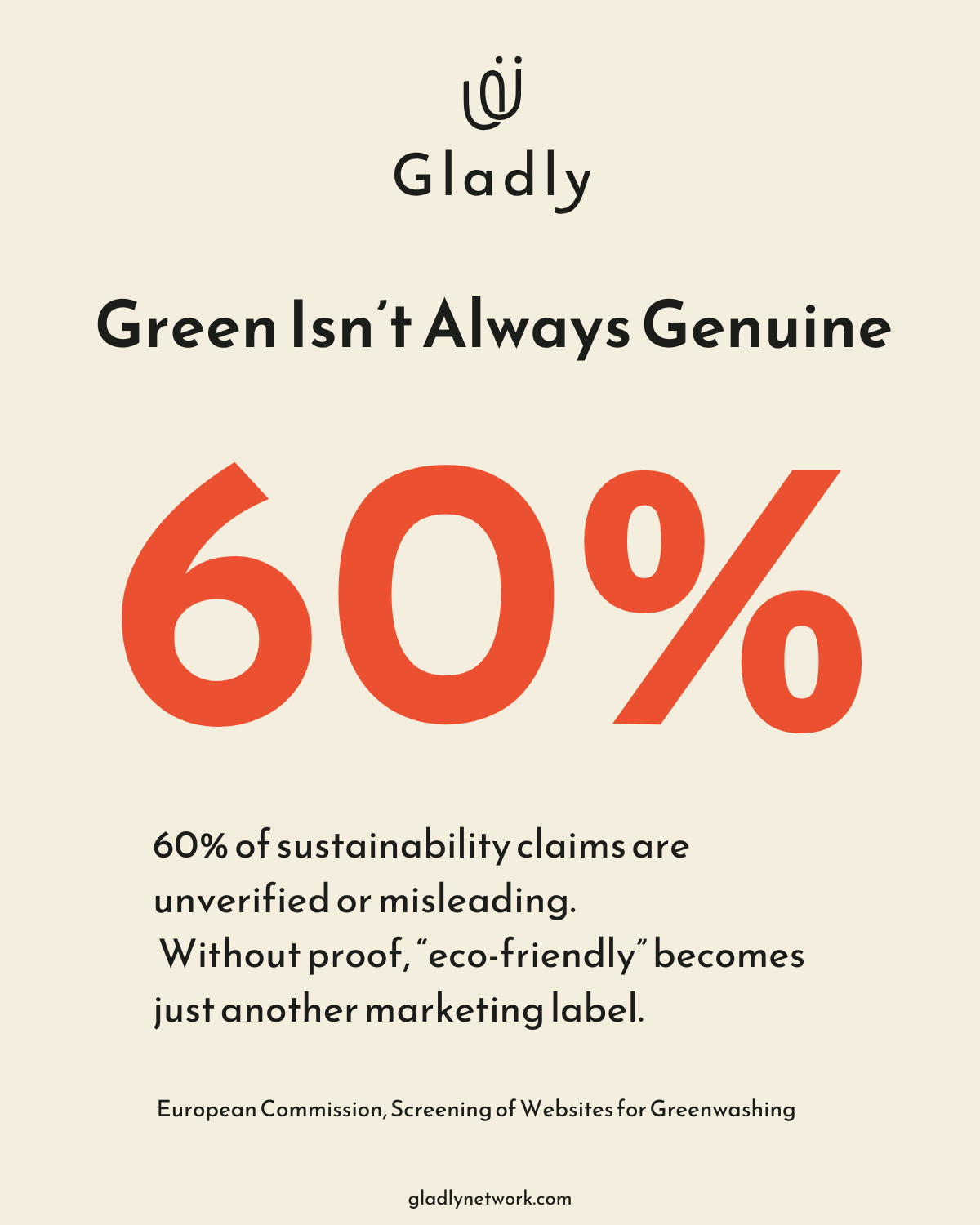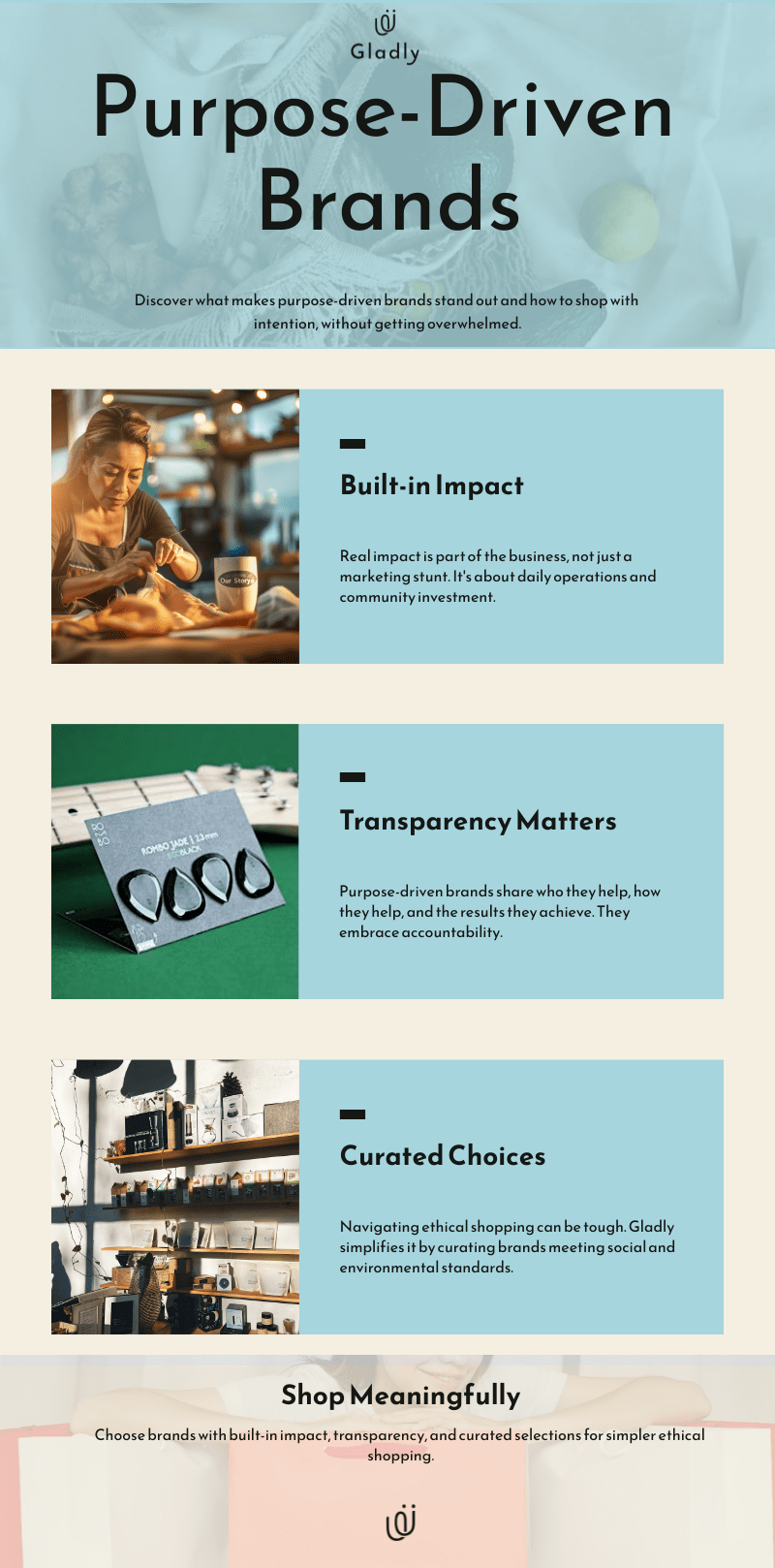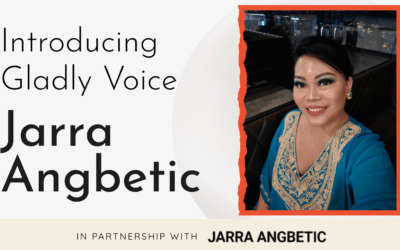Most of us want to spend our money wisely. Not just on good products, but on purchases that feel aligned with what we believe. Maybe it’s a brand that supports mental health, protects the planet, or helps underserved communities. That kind of impact matters.
But with so many companies using purpose-driven language, it’s hard to know who’s actually walking the talk. “Giving back” sounds great, but what does it really mean?
This article looks at what real impact looks like, how to spot it, and why platforms like Gladly make it easier to support brands that truly care.
Why giving back alone isn’t enough to show real impact
Fashion contributes 10% of global greenhouse gas emissions, surpassing international flights and maritime shipping combined. Many fashion brands claim sustainability credentials but continue harmful practices. This disconnect creates confusion for shoppers who want their purchases to matter.
Brands making genuine differences align their entire business model with the three pillars of sustainability – environmental stewardship, social responsibility, and economic viability.
When Purpose Becomes Marketing
Purpose-driven language fills product packaging and advertisements everywhere you look. Studies reveal approximately 60% of sustainability claims lack substantiation. Brands splash terms like “eco-friendly” and “giving back” across marketing materials without specific metrics or verification.

This greenwashing creates a haze of good intentions without measurable outcomes. The risks extend beyond consumer deception. Empty promises diminish trust in genuinely impactful brands.
Without verification, purpose becomes just another marketing tactic.
What lasting impact really looks like
Authentic purpose-focused companies share common traits that separate them from sustainability trend-followers. Their programs remain consistent rather than appearing as one-off campaigns tied to sales goals.
Sustainable fashion pioneers demonstrate long-term commitment through measurable goals and regular reporting. These organizations integrate responsible practices throughout their operations.
Companies with real impact view sustainability not as a marketing expense but as fundamental to their identity. Success for these businesses means balancing profit with positive change.
Comfrt, for example, designs everyday clothing with a dual purpose: comfort and mental well-being. Their slightly weighted garments are more than cozy; they’re a tool for calm in stressful times. And through ongoing efforts to raise awareness around mental health, Comfrt shows how business goals and social missions can grow together.
Why curation matters in a noisy market
Most of us lack time to investigate every brand’s claims before making purchases. The overwhelming number of options creates decision fatigue.
Expert curation simplifies ethical shopping by vetting brands against rigorous standards. Curated ecosystems like ours evaluate impact claims, verify practices, and monitor ongoing commitments so you don’t have to. This selection process filters out greenwashing effectively.
Through careful curation, we transform overwhelming choices into clear pathways for purposeful purchasing. Our community benefits from trusted recommendations that match values with actions.
We can support brands creating meaningful change while avoiding those merely marketing good intentions.
What giving back looks like in action
Beyond promises and pledges, real impact happens when brands weave purpose throughout operations.
According to Merck’s 2023/2024 Impact Report, over 550 million people in 2023. They aim to extend access to an additional 350 million by 2025. These numbers represent lives changed through intentional business practices, not just marketing campaigns.
How can companies extend this impact to their own teams? The answer often lies in recognition. Organizations using low-cost methods like thank-you notes create cultures where giving flows naturally.
This approach moves from leadership to team members and outward to communities. Such ripple effects multiply impact, transforming occasional charity into consistent care.
Community and access-driven models
Many organizations serve underserved communities through thoughtful product design. Health-focused brands partner with local groups to bring wellness resources to areas with limited access. These partnerships address systemic barriers rather than symptoms.
Education provides another powerful avenue for community impact. By integrating learning resources into platforms, companies transform everyday interactions into growth opportunities. ImpactSuite exemplifies this approach by embedding educational content within customer experiences. Their community-centered model shows how business success and social good naturally complement each other.
Supporting family well-being and safety
Family safety technology represents a growing sector where purpose drives innovation. Gabb Wireless creates phones specifically designed for children with protective features. Their products filter harmful content while maintaining essential communication functions. This balance addresses parental concerns about technology exposure.
Family well-being extends beyond safety to include mental health support. Products in this space facilitate connection rather than distraction. HubSpot Marketing Statistics reveal that 37.52% of marketers now prioritize customer experience aligned with brand values.
This trend reflects how recognition of family priorities directly boosts employee morale and engagement. When we acknowledge what matters to our teams, they bring that same care to customers.

Economic empowerment and advocacy
Economic empowerment creates opportunities for marginalized communities through fair trade practices. NiTOR exemplifies this approach by integrating social missions throughout its operations. Their commitment includes:
- Anti-trafficking initiatives that provide safe employment
- Veteran support programs offering skills development
- Supply chain transparency ensures ethical sourcing
- Community reinvestment from profits
Advocacy-driven giving links purchases directly to causes, ensuring transparent impact. When customers understand how their dollars translate to change, trust deepens.
This transparency builds loyal communities around shared values rather than transactions. The most effective models involve customers as active participants rather than passive donors.
How to identify brands that give back with integrity
Shopping with purpose requires a bit of detective work. Before adding items to our cart, let’s consider three revealing questions:
- Who benefits from my purchase? Are real communities receiving support?
- Can we see specific, measurable results?
- Does giving back live at the company’s core or just in seasonal campaigns?
These straightforward questions help us separate authentic impact from clever marketing.
Brands with genuine commitment welcome this scrutiny; transparency builds trust rather than threatening it. Research from impact measurement case studies shows that organizations with integrity consistently document their social outcomes.

Signs of substance versus surface signals
Third-party verification provides compelling evidence of commitment. Independent audits and impact reports offer transparency about both achievements and challenges.
Consistency across seasons indicates genuine dedication. Look beyond holiday campaigns and Earth Month promotions to find ongoing initiatives. According to the sustainability checklist for brands, meaningful certifications like B Corp require regular reassessment, ensuring standards remain high year after year.
Watch for warning signs in brand communications. Red flags include emotional appeals without supporting data, vague percentages without context, and promises without timelines.
Avoiding overwhelm with curated choices
Even dedicated conscious consumers face decision fatigue. The mental energy required to research every purchase can exhaust our best intentions.
This reality makes trusted platforms valuable for maintaining ethical standards. They handle the vetting process so we don’t have to start from scratch with every shopping decision.
Gladly’s platform applies consistent criteria across brands. Our team verifies practices and monitors ongoing commitments behind the scenes.
This curation creates a trusted space where shopping aligns with values.
Every purchase leaves a mark, so choose yours intentionally
Your everyday choices have more power than you think. From what you wear to how you snack or clean your home, each purchase reflects the kind of world you want to live in.

Gladly shop makes it easier to shop with intention. We’ve done the research, so you can focus on what feels right. Joining is free, and every purchase you make can help create real impact.
Take a look around. Discover brands you can believe in.











